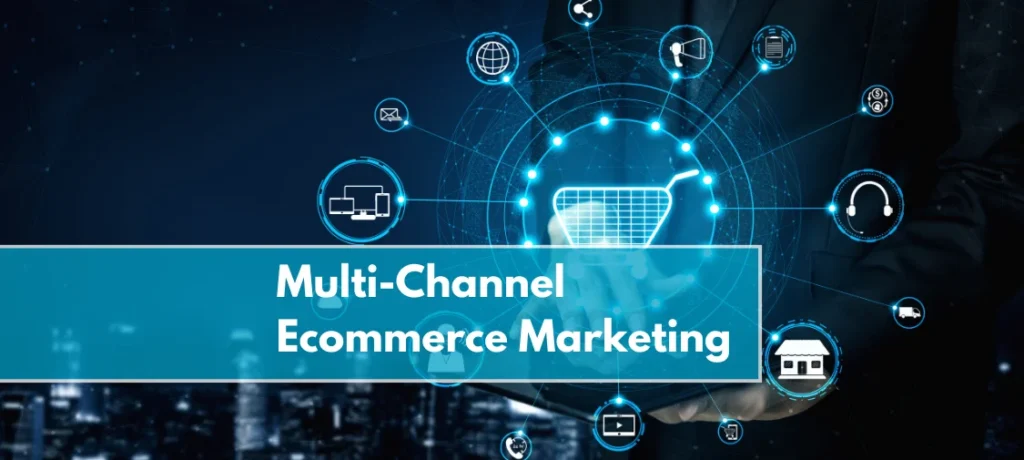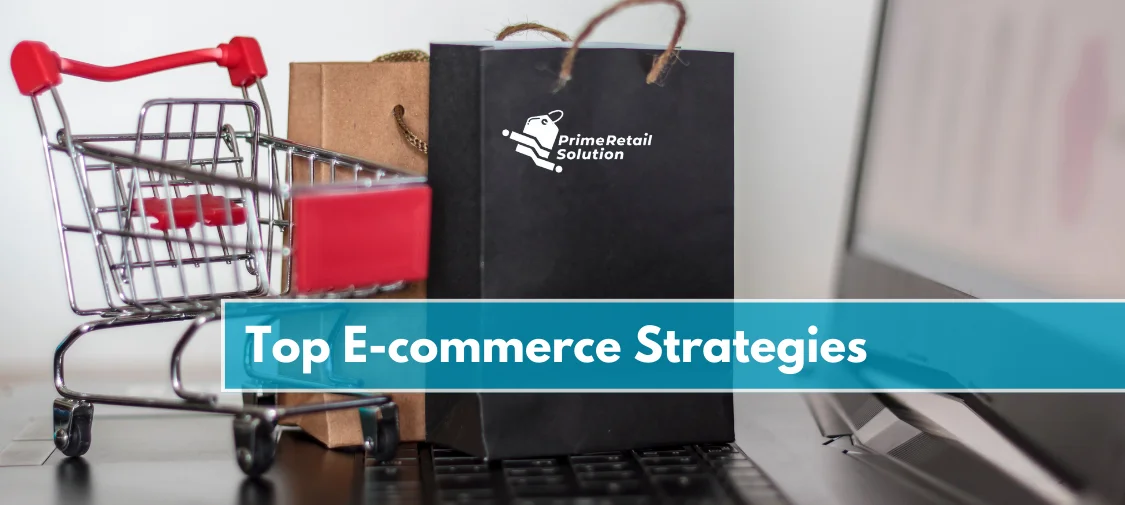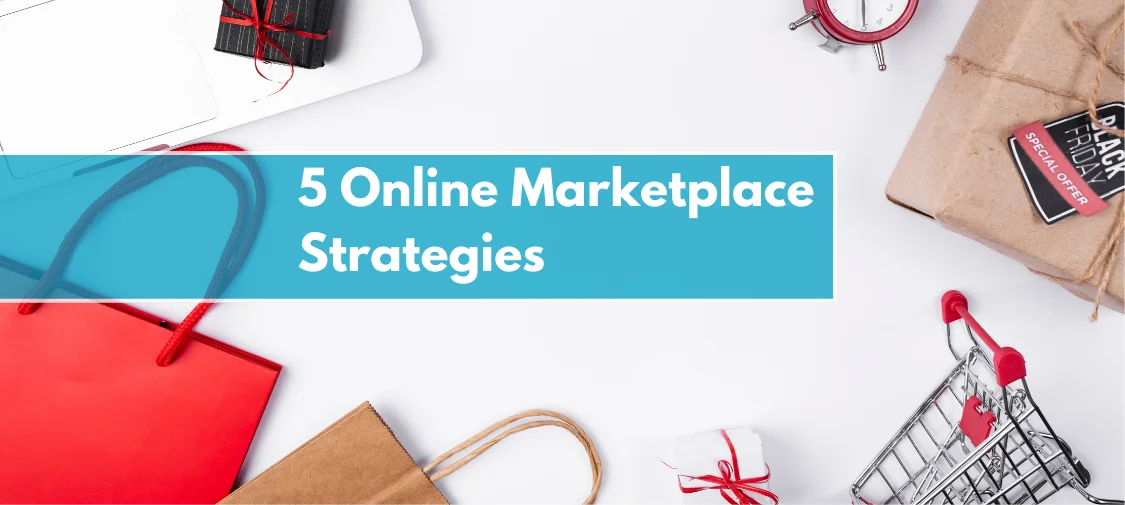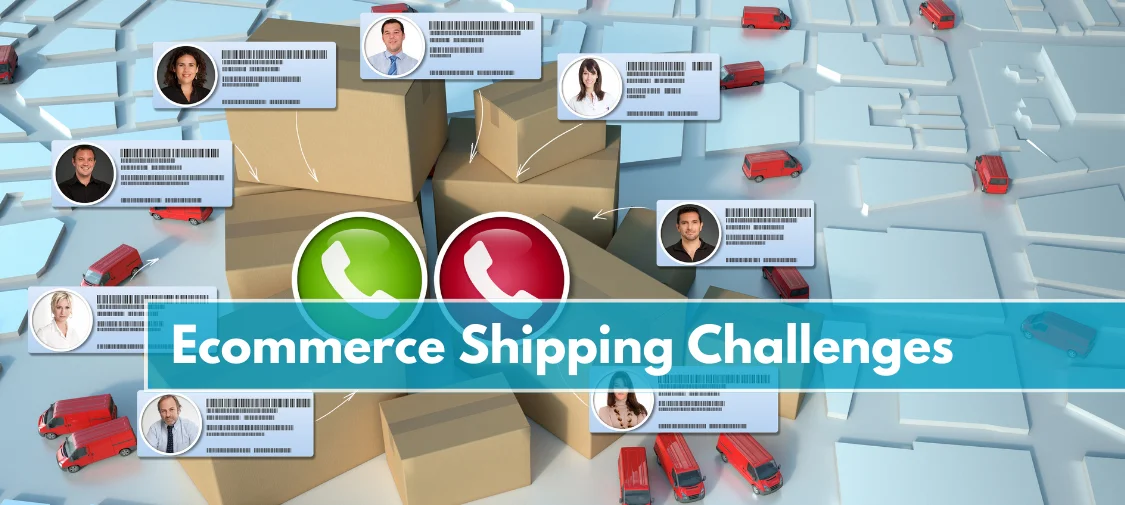E-commerce
Multi-Channel Ecommerce Marketing Tips: How to Reach More Customers & Boost Sales
For an online store, knowing that buyers aren’t committed to a specific sales channel is crucial. 73% of consumers use numerous channels during their purchasing trip therefore having a strong presence on all the key channels is vital to reaching your target market.
To reach a wider audience and generate more sales, Multi-channel e-commerce marketing has emerged as the gold standard in the digital world of eCommerce. With multiple channels accessible, such as social media and marketplaces, this multi-channel ecommerce strategy allows firms to communicate with their customers through various touchpoints.
Let’s get started, so make yourself a cup of coffee.
What Is Multi-Channel E-Commerce Marketing?
Employing “Multi-channel e-commerce marketing” to reach your target demographic may involve both online and offline methods, such as your website and social media pages, as well as print ads and snail mail. Keep in mind that a unified customer experience requires cooperation between channels.
In the past, there were only two channels in multi-channel retail: the in-store experience and marketing materials.
The term “Multi-channel e-commerce marketing” describes the practice accurately. It entails deploying advertising initiatives across many mediums to promote your ecommerce business.
This tactic aims to increase exposure to your business by increasing your online and offline communication channels with potential buyers.
Types Of Digital Marketing Channels

Many businesses today use multi-channel e-commerce marketing techniques, with digital and online channels being particularly popular. Increasing brand awareness and sales among a large, dispersed audience is made possible in today’s largely digital landscape by leveraging Internet channels. While some organizations sell throughout the physical and digital domains, others primarily focus on online channels.
Social media marketplaces
They are now widely used by businesses as a multi-channel ecommerce strategy to reach their target demographic. Shopper-friendly solutions can be found on social media sites including Facebook, Instagram, and TikTok.
Online Shopping Platforms
Digital shopping platforms are similar to eCommerce businesses in that they aggregate products from different manufacturers under one roof. Business owners have a once-in-a-lifetime chance to showcase their product catalogs to a massive audience all at once thanks to multichannel selling platforms like Amazon, eBay, Walmart, Best Buy, Etsy, and more.

eCommerce sites
The most common way to reach out to customers in this industry is through a specialized eCommerce website. Small businesses and startups in the modern era can easily create an online storefront that works in tandem with their offline operations.
Search Engine Optimization (SEO)
Search engine optimization, or SEO, is the method of enhancing a website’s visibility in SERPs. To do this, it is necessary to optimize your website in terms of both its content and its technological performance, including the use of relevant keywords.
Email marketing
Email marketing refers to the practice of promoting a business or product using email communications. Email marketing has several applications, including lead nurturing, client relationship management, and revenue generation. Sending out a weekly newsletter is a great example of email marketing.
Affiliate Marketing
Affiliate marketing is a sort of pay-for-performance advertising in which a percentage of the revenue you bring in is shared with you. This has the potential to attract a larger audience and bring in more money.
How Does Multi-channel Marketing Benefit Brands?

With multi-channel marketing, you can improve consumer involvement, spread your message further, reach more people, and shorten the time it takes to convert a lead. In the sections below, we’ll explain how an effective multi-channel ecommerce strategy can help your business.
Establish the brand’s presence in multiple channels and target different markets:
By employing various distribution methods, it makes sense to tailor your approach to each audience’s specific requirements and preferences. For example, you’ll want to use social media as your primary medium to reach millennials. However, direct mail and print ads may be more effective offline ways to target baby boomers.
Offers consumers multiple choices to decide where to shop for their product:
Today, consumers are more intelligent and have more choices than ever before. They can learn about things online, shop for them in a store, or use a smartphone app. Since this is how consumers process advertisements, you must be present on all channels your target market uses. If you do, you could gain out on prospective sales.
Marketing campaigns across multiple channels help point out what to improve and what to avoid:
You can learn more about what is and isn’t working using numerous channels. If, for instance, you find that your social media campaign is increasing website traffic without corresponding increases in conversion rates, you may reconsider your approach. However, if you notice that your email marketing campaign leads to a high sales volume, you’ll know it’s worth your time and effort to expand it.
Promote consistent brand image across multiple channels and target markets:
Marketers employing multi-channel marketing can ensure a consistent brand image across all channels. This helps consumers become accustomed to your company’s particular personality and image, regardless of where the campaigns are being executed, targeting the relevant demographics.
Streamline the journey that the customer goes through using any marketing channel:
By incorporating more than one channel into your multi-channel ecommerce strategy, you may better influence your customers as they go through the sales funnel and ultimately take the action you want them to take.
Brand marketing across different channels reduces the risk of losing customers and staying relevant:
When you have many sales channels, you can better protect yourself from losing consumers to ineffective multi-channel marketing tactics. Adopting an efficient multi-channel ecommerce strategy, such as collaborating with logistics and fulfillment specialists, can reduce the likelihood of stock-outs.
What Are the Challenges Faced In Multi-Channel E-Commerce Marketing?
Brands should think carefully about the difficulties involved before committing to the strategy. If you’re a multi-channel marketer, you may face the following difficulties while engaging in multi-channel retailing:
Choose The Appropriate Marketing Channel:
When first starting with multi-channel, it can be tempting to cover as many channels as possible. But that’s only sometimes productive. You need to ensure that your platform presence is helpful to your intended audience and helps you generate more revenue.
Allocating the funds to the various steps of the funnel is a more practical solution.
You can, for instance, allocate a certain amount of your budget to Awareness campaigns, in which you promote your product via methods such as Amazon-sponsored ads and other social media ads such as Instagram, TikTok, and Twitter (X).

Then, you may allocate more funds to retargeting efforts, increasing the likelihood of those site visitors becoming paying clients.
Inventory Management May Become Overwhelming
Maintaining a presence in multiple marketplaces demonstrates a commitment to promptly fulfilling customer orders. This can streamline logistics and maintain appropriate levels of inventory to meet customer demand.
For instance, you may need help deciding which order to fulfill if you run out of a product and a customer buys the last of it in-store while another customer buys the goods online. If you fail to provide the services for which customers have paid, you may suffer damage to your reputation.
Difficult To Keep Up With Competitive Pricing
Customers have been making price comparisons between vendors for years. However, modern consumers often compare the costs of identical items across other online marketplaces.
That’s why it’s so hard for online and offline shops to determine what to charge for their wares. A direct-to-consumer online store, for instance, would have fewer operating expenses than a wholesale marketplace like Amazon. As a result, the cost will vary.
Similarly, you can find a sale or promotion on one or more sites. The cost is also impacted.
One of the biggest obstacles to successfully implementing a multi-channel e-commerce marketing strategy is determining product prices without thoroughly understanding each channel’s customers’ demographics and willingness to pay.
Maintain Customer Experience On Each Channel
There is a loss of control over the customer experience when selling your products through many channels.
Bad customer service from a third party can, rightly or not, reflect adversely on your brand. Furthermore, your customer service team must pay attention to each channel. Due to the complexity of supporting several platforms, customer service may need to improve.
Sales Attribution
Customers’ paths to purchase are more circuitous when dealing with multi-channel retailers. One channel is always aiding a sale through another channel.
Advertisements on Instagram can help consumers learn about your goods. They eventually purchased it after viewing the item’s Amazon website. Even though the consumer arrived from Instagram, the sale will be credited to Amazon in the analytics.
Amazon attribution is one multi-channel ecommerce strategy for dealing with this issue. It’s a valuable tool for keeping tabs on a company’s advertising and marketing efforts across the web.
3 E-Commerce Marketing Tips To Remember:
The key to being successful in multichannel retailing is to grow gradually and steadily. Take into account these three e-commerce marketing tips for multichannel selling.
Pay Attention To Your Existing Site Before Branching Out
When you run your store, you can dictate every step of the buying process and how your customers interact with you. Successful order fulfillment on your site should encourage you to explore selling on other websites.
Social media advertising and other forms of digital marketing may be necessary to attract visitors to your website. Before committing to a sales strategy, it can be helpful to get familiar with the platform on which it will be implemented.
Put yourself in the shoes of your customers
Using multi-channel marketing to better serve modern consumers. A customer could purchase your product either by conducting an online search or seeing it endorsed by a well-known social media influencer.
When you adopt multichannel selling, you’re ready to take advantage of sales chances in any of these channels. This is why many entrepreneurs think it’s worthwhile to invest in multichannel selling.
Take only as much on as you can handle
If a company develops into too many markets, it risks falling behind on order processing and customer service. It may be tempting to list your products on as many marketplaces as possible, but it’s wise to start with a limited scope and only expand once you’re confident you can do so.
Large retailers like Amazon and Walmart have huge customer bases, but their order fulfillment requirements can be difficult for smaller companies to achieve. Once you’ve perfected your methods for fulfilling orders through your website, you can expand to these other channels.
Key Takeaway!
We’ve covered pretty much every basic aspect of Multi-channel e-commerce marketing, once you decide to explore your success opportunities via multichannel. To water down our cost-benefit analysis, our final e-commerce marketing tips to marketers are; #1 test out just a couple of channels, #2 keep an eye on the data, and #3 adjust your spending accordingly.
If you want your business to thrive in today’s ever-changing market trends and demands, then this is your cue to adopt multi-channel marketing for your eCommerce. Customers nowadays expect to be able to contact brands through a variety of different methods, and if you don’t provide this, they will be pushing them to go elsewhere.
Share





